How to see Endeavour ride into sunset
October 11, 2012
So it won’t be The Rock. The access will be tighter and the pageantry slighter than when LACMA’s 340-ton boulder rolled through town.
Early reports had raised hopes that the move of the Space Shuttle Endeavour from LAX to the California Science Center would become a rolling parade like the one that accompanied the immense granite stone in Michael Heizer’s “Levitated Mass” at LACMA. But as logistical realities set in, it became clear that the Endeavour, which has a 78-foot wingspan, is about four times as wide, six times as long and twice as high as the “Levitated Mass” boulder.
Moreover, the spacecraft requires a 10-foot clearance on each side because it is covered in a special lightweight, silica-based, thermal insulation so fragile that raindrops can dent it. Its wings can’t be removed and replaced like an airplane’s. And to the chagrin of many, hundreds of trees had to be cut down to accommodate Endeavour’s massive silhouette.
“It’s so big that the street is barely wide enough in some places to accommodate the shuttle itself, let alone the crowd control on the sidewalk,” says LAPD Sgt. Rudy Lopez.
“It’s a safety issue,” agrees project director Marty Fabrick of the California Science Center Foundation, noting that the crews operating the shuttle’s special transporter will have their hands full just maneuvering it under power lines and around corners with scant clearance between the wheels and the curb. “They have to have 100% focus on what they’re doing. We don’t want them distracted by the worry that someone will fall off a curb and get hurt.”
But that doesn’t mean there won’t be plenty of chances to glimpse the cross-town progress of “Mission 26”, as it’s been dubbed. From organized events to wide spots on the 12-mile route, thousands are expected to witness the spacecraft’s road trip, which begins at about 12:01 a.m. Friday, October 12, when it pulls out of its United Airlines hangar en route to the Science Center, where it’s expected to touch down Saturday night. (Click here for a schedule and here for a route map.)
Updated 10/12/12: Endeavour’s last ride is underway. Check out this video posted at Curbed L.A. to see the craft crossing Sepulveda Boulevard.
Despite the disappointment that has arisen since the Los Angeles Police Department announced that sidewalks on much of the route would be closed for safety reasons, Fabrick promises that “people will have ample opportunity to see this historic move.”
Two planned celebrations are scheduled for Saturday, and at least two pit stops will offer a decent view of the shuttle, as will some parts of Crenshaw Boulevard for those lucky enough to live nearby. Locals along the route also will get a good look as the Endeavour passes homes, malls and markets, as well as landmarks such as Inglewood City Hall.
Some 700 LAPD cadets and volunteers will be doing crowd control and event security, and police have urged spectators to expect large crowds, heavy traffic and delays. And lots of street closures: Access to the south side of Los Angeles International Airport will be restricted during the move for security reasons, for example, and the shuttle’s planned 2:30 a.m. exit from LAX via Northside Parkway will be open to credentialed media only.
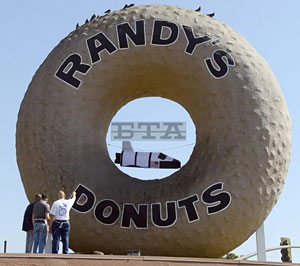
Despite the little Endeavour in the donut hole, Randy's will be closed to the shuttle-viewing public Friday afternoon.
Also, the Friday night crossing of the 405 Freeway at the Manchester Bridge will be a tougher ticket than some might expect, given the location. The California Highway patrol will be closing ramps and running traffic stops to discourage gawking, and the crossing itself isn’t scheduled to take place until sometime between 10 p.m. and midnight.
And just as a side note: Though it might be tempting to try to catch the crossing at, say, Randy’s Donuts, the iconic shop with the giant doughnut just off the freeway, don’t bother. Larry Weintraub, the owner, had initially been expecting a large crowd of shuttle enthusiasts and had even added a mini-Endeavour to the hole of his famous doughnut.
But because of the many sidewalk closures, he ended up instead renting his lot to Toyota, which expects to bring in about 150 people to film the crossing.
The company —a longtime corporate supporter of the science center—agreed to tow the Endeavour across the overpass with a Toyota Tundra pickup truck and a specialized dolly. The maneuver is needed because Caltrans’ weight distribution requirements for the bridge called for a different tow mechanism than the Endeavour’s transportation system.
Even though Randy’s will be closed to everyone but Toyota guests on Friday after 2 p.m., the shuttle should be easily visible from several formal and informal venues. Among the better opportunities:
La Tijera Boulevard and Sepulveda Eastway in Westchester
A commercial lot, this will be the shuttle’s first layover, on Friday from about 4:15 a.m. until about 1:30 p.m. Donation of the space—look for the Citibank and the Quizno’s—was arranged by Westchester management company Drollinger Properties, which agreed to let the shuttle park there while crews move some power lines and make some adjustments to its customized carrier.
Inglewood Forum at 3900 W. Manchester Boulevard in Inglewood
Though the shuttle is scheduled to pass by Inglewood City Hall at about 8 a.m. on Saturday, space is limited and officials are encouraging the public to go straight to the party at the Forum, where the shuttle is expected to be parked briefly from about 9 a.m. to 9:30 a.m. “That will be the real public kickoff,” says Fabrick, noting that the city is anticipating a crowd of some 10,000 people and that Hollywood Park will be offering free parking starting at 4 a.m. (no overnight camping.) “There will be a formal program and astronauts and a band and color guard. And the shuttle is so big and high that you won’t need to be on the curb to have a great view of it.”
Crenshaw Boulevard between 54th Street and Leimert Boulevard
The shuttle is expected to pass by here between about 12:30 p.m. and 1:30 p.m. Saturday. Though outsiders are being discouraged due to a lack of parking, the area is expected to have one of the better vantage points for locals who can walk or bike there. “The shuttle is going to be completely on the north side of the center median, so the sidewalk on the south side will be open,” says Fabrick, “and locals should have a fantastic view.”
Baldwin Hills Crenshaw Plaza, 3650 W. Martin Luther King Jr. Boulevard
Saturday’s second big celebration is scheduled for 1:30 p.m. This one will have a special show produced and directed by choreographer Debbie Allen; seating will be limited, with seats distributed by mall officials. Police anticipate a standing room only crowd of several thousand and have urged spectators to arrive early. The program is expected to last about an hour, but after the shuttle’s 2 p.m. scheduled arrival, crews will be spending another hour or so at the site adjusting the shuttle carrier for the next leg of the trip.
Bill Robertson Lane at Exposition Park
This will be where the shuttle turns toward the California Science Center on Saturday at approximately 8:30 p.m., and probably the last, best place to see Endeavour before it is installed at the Samuel Oschin Space Shuttle Display Pavilion. Viewers will be encouraged to gather at four parking lots north of MLK between Bill Robertson Lane and Vermont Avenue. Public transportation is available by bus and via the Expo Line light rail.
Endeavour’s grand opening will be October 30, with early access for science center members. Admission to the science center and the shuttle is free, but viewers are encouraged to obtain time tickets to reserve a space. (Click here for membership information and here for time ticketing.)
It will be housed in a museum hangar pending completion of its permanent home at the Samuel Oschin Air and Space Center, which is aiming for completion by 2018.
Posted 10/11/12
The real work starts now
October 4, 2012
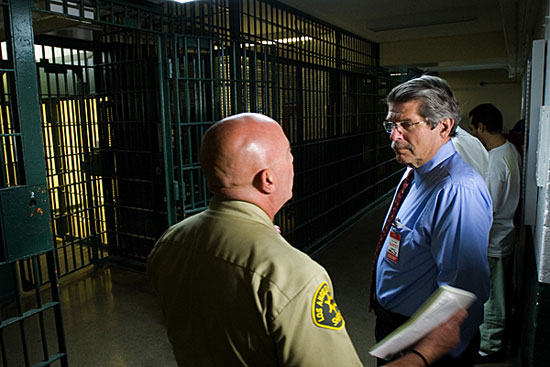
Supervisor Yaroslavsky visits Men's Central Jail shortly after creation of the blue-ribbon commission.
One year ago this month, the controversy over alleged deputy brutality inside the jail was threatening to utterly erode public confidence in the constitutional performance of the Los Angeles County Sheriff’s Department, our region’s largest law enforcement agency.
Not only were inmates accusing deputies of bone-breaking beatings but civilian observers—including a jail chaplain—had provided the American Civil Liberties Union with affidavits saying they’d witnessed fierce and unprovoked attacks. There were also revelations of a federal investigation into the widening allegations.
Under increasing fire, Sheriff Lee Baca publicly said at the time that his command staff had kept him in the dark about the problems but that he was determined to bring order and integrity to the county’s massive jail system—an entirely credible pledge given the sheriff’s longtime advocacy for inmate educational programs. To get to that point, however, would be no easy task.
In the midst of the uproar, I called Sheriff Baca and asked if I could meet with him in his office in Monterey Park. I arrived two hours later with a specific idea to help restore public trust in the department and in the broader leadership of the county, including the Board of Supervisors. One-on-one with the sheriff, I suggested that the board create a no-holds-barred blue-ribbon commission to investigate the origins of the jail problems and recommend reforms for the future. I believed that, with the sheriff on board, he’d be more likely to support the outcome.
He didn’t hesitate for a moment. Let the chips fall where they may, he said. Within days, I introduced a board motion with my colleague Mark Ridley-Thomas to create the Citizens’ Commission on Jail Violence. Its mandate: to excavate and expose the truth.
Last week this distinguished panel of seven commissioners released its final report. And it was, as we requested, unflinching in its assessment of what went wrong and what must be fixed. The bottom line was this: multi-faceted breakdowns in the management of the county’s jails—and deep flaws in the department’s disciplinary system—had created an environment ripe for unchecked brutality by deputies. The commission placed responsibility for these failings squarely on Baca and his second-in-command, Undersheriff Paul Tanaka. “Simply stated,” the panel wrote, “the Sheriff did not pay enough attention to the jails until external events forced him to do so.”
What makes the commission’s conclusions particularly difficult to ignore or dismiss is that they were rendered with unanimity by panelists of varying demographic and political stripes, from federal judges appointed by Republican and Democratic administrations, to the chief of police of Long Beach to a revered pastor in South Los Angeles.
Yesterday, Sheriff Baca summoned the media to Men’s Central Jail to comment publicly for the first time on the report, which not only took him to task but offered more than 60 recommendations for reform, including more rigorous independent oversight. “I couldn’t have written them better myself,” Baca said, reminding reporters that “I wanted this commission as much as the board did.” As he has done repeatedly over the past months, Baca again acknowledged his failings in the matter.
I appreciate and respect the sheriff’s willingness to publicly take responsibility for his department’s shortcomings, an admirable and longstanding characteristic of his management style. But the occasion at hand calls for more than words of contrition or pledges of reform that could fall short of their expressed ideals without sustained, aggressive action on the sheriff’s part.
The jail commission noted that their final report actually is just a starting point, something that all of us with a public responsibility—and a duty to uphold constitutional rights—should keep in mind. I pledge my support to do whatever I can to work with the Sheriff’s Department to bring about the kind of structural and cultural changes the commission has recommended. And above all, we must avoid the outcome the panel fears most: that the report will collect dust on a shelf, like too many reform efforts of the past.
Posted 10/4/12
Street fighting man
October 4, 2012
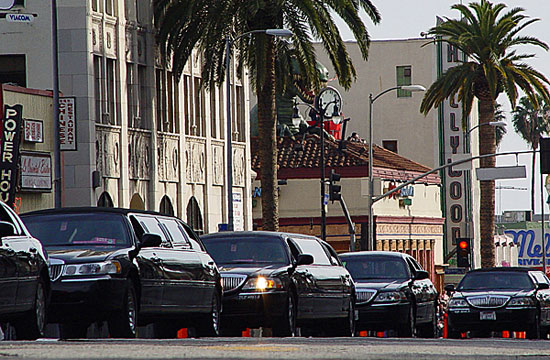
The annual Oscar challenge: getting the limos to the Academy Awards safely and on time. Photo/Hebig via Flicrk
In this, the land of cars, all roads lead to Aram Sahakian.
With one false move, one slight miscalculation, he could bring L.A.’s traffic to a hellish halt. There are plenty of powerful jobs in Los Angeles government, but even the mayor takes a back seat to this street-smart guy when it comes to keeping the city moving.
Sahakian oversees special traffic operations for the city’s Department of Transportation and is thus responsible for mapping and implementing street closures for every big event in Los Angeles. Perhaps you know his work: Carmageddon (and next week’s sequel), the Academy Awards, championship parades for the Lakers and Kings, CicLAvia, presidential visits, the L.A marathon and, of course, The Rock’s journey to the Los Angeles County Museum of Art.
“I have an extremely understanding wife,” Sahakian says of the relentless hours and maddening deadlines of his job. “When you work for me, you better expect not to have much of a personal life.”
Now Sahakian and his small staff are preparing for one of their biggest logistical challenges—getting the retired space shuttle Endeavour from LAX to its new home at the California Science Center in Exposition Park. The shuttle is scheduled to arrive at the airport on Friday. On October 12, it will start a two-day journey to the Science Center, passing through Inglewood and into Sahakian’s turf.
Already, hundreds of trees are being felled to accommodate Endeavour’s 78-foot wing span. But that’s just the beginning. Sahakian says that once Endeavour actually gets rolling on its low-slung, remote-controlled transport, nearly 50 traffic signals along the route will have to be rapidly taken down as the shuttle approaches and then immediately restored after it passes—all in a single day.
“There’s no room for error,” says Sahakian, a 23-year veteran of the department. “If we get a picture in the Los Angeles Times showing the shuttle stuck because of a signal standard, this would not be good.”
In recent days, another complication has surfaced: Sophisticated tests of the streets along the route through South Los Angeles and downtown have revealed vulnerabilities beneath the surface, where sewer and water lines are located. These 14 areas, Sahakian says, could become sink holes under Endeavour’s 78 tons. This would not be good, either.
To fix the problem, Sahakian says that at least 150 plates of thick steel will be placed under the transport’s wheels to distribute its weight along the worrisome stretches. “And I’m not talking about a couple spots here and there,” Sahakian says. Details of the effort are still being worked out, but he expects the entire intersection of Crenshaw and Martin Luther King boulevards to be covered with steel.
Although the logistics of all this may seem dizzying, Sahakian says he has a bigger concern. “This is a cakewalk,” he says of the tightly choreographed traffic plan. “We can do this in our sleep. The big unknown is the crowd.”
Sahakian, who also oversees emergency response for his department, worries that thousands of people could turn out for the once-in-a-lifetime spectacle of the shuttle’s 12-mile urban journey. But this is not like artist Michael Heizer’s granite rock, which drew huge crowds during its slow-motion trip to LACMA, where it became the 340-ton centerpiece of “Levitated Mass.” In the shuttle’s case—because of its width and NASA’s desire to keep the public at a safe distance—there’ll be few places to stand, except at the end of streets that intersect the route or in designated viewing areas.
“What I worry about,” Sahakian says, “is a Rose Parade situation where we’ll have thousands of people out there with no place for them to park or see the shuttle.”
These are the kinds of scenarios that can haunt a planner’s waking—and sleeping—hours. Sahakian says that whether it’s the Endeavour project or the many others he’s constantly juggling, he may get an idea in the middle of the night. “Sometimes, I’ll send emails at 3 a.m. so I don’t forget,” he says.
Sounding more like an inspirational speaker (a la John Wooden) than a traffic engineer, Sahakian says his motto is: “Not planning is planning for disaster.”
Consider the Oscars. It is Sahakian’s job, among other things, to make sure that the fleets of limousines ferrying nominees and other VIPs don’t get tangled up outside the Dolby Theatre, formerly the Kodak, on Hollywood Boulevard. To that end, he has created a “serpentine” of concrete K-rail, through which each limo must slowly (but not too slowly) pass in an orderly fashion—a technique he’ll also be employing for this weekend’s Emmy Awards at Staples Center.
But the planning begins long before the stars emerge from their luxurious rides. “One of the most important elements of traffic planning,” he says, “is to know where people are coming from so you can facilitate the route.” That’s why his crew jotted down limo license plate numbers a few years back and studied their points of origin. Not surprisingly, most were arriving from the Westside.
Sahakian is not necessarily expecting any awards from the motoring public for his efforts. “If it’s a Lakers parade, they’re happy,” he says. “If it’s a 5K fundraiser, they’re not so happy.”
More often than not, he hears, “You guys are messing up the whole city.” Or maybe, “Whose bright idea was this?”
Still, he knows—even if the public doesn’t—that things could be a lot worse.
Last week, in his cramped office on the edge of downtown, Sahakian told a visitor that he’d recently worked with organizers of the hugely popular CicLAvia to change the date of its latest event, which was scheduled for the same October weekend as Endeavour’s journey. “Thank God CicLAvia agreed to move up its date” to October 7, Sahakian said with obvious relief.
A few hours later, however, his visitor got an email that spoke volumes about the man and his work. “Just to make it more interesting,” he wrote, “now I have Obama visiting on 10/7. Yes, Ciclavia :)”

Endeavour on its way to L.A., where Sahakian will help orchestrate its final journey. Photo/Los Angeles Times
Posted 9/19/12
CicLAvia heads down a new road
October 3, 2012
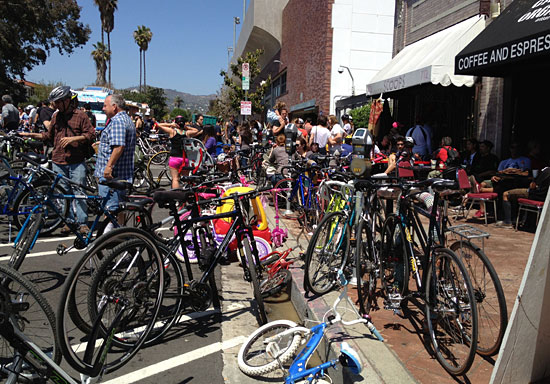
The Bicycle District is usually packed for CicLAvia but now the event is rolling out to new communities.
For the first time since its inception, the freewheeling car-free street party known as CicLAvia won’t be cycling through Los Angeles’ Bicycle District when it rolls around this Sunday.
The Heliotrope and Melrose neighborhood known for its pioneering, bike-friendly ethos and jaunty nickname “Hel-Mel” has been penciled out, this time around, in favor of a map that stretches farther south than ever before—from downtown to Exposition Park and USC. It also includes a new northerly hub in Chinatown, an eastward stretch to the Soto Gold Line station in Boyle Heights, and a stop at downtown’s new Grand Park.
As CicLAvia prepares for its fifth outing, its new map is just the most visible sign of an enterprise that’s literally on the move, stretching into new areas easily reached by L.A.’s growing public transit network. Pedestrians are taking their biggest step yet toward claiming their place on the pavement, as Los Angeles Walks sponsors a mid-day “walking parade” dubbed WalkLAvia down the middle of Figueroa from 8th Street to Exposition Park. And, with ambitious plans to expand and integrate CicLAvia more deeply into the fabric of the city, efforts are underway to significantly increase the amount of corporate support to sustain the event in years to come.
The course is actually slightly shorter this time—9.1 miles, compared to the previous 10. But clearly, CicLAvia’s cultural footprint is big, and growing, with more than 100,000 participants expected Sunday for the event, which runs from 10 a.m. to 3 p.m.
“We instantly, overnight, became the largest car-free event in the United States,” said Aaron Paley, who helped found CicLAvia and now serves as its executive producer. “We went from being an idea…to becoming something that Angelenos expect out of their city. A car-free day is now just as much a part of Los Angeles as the Venice boardwalk, or the Hollywood sign. We changed the conversation in Los Angeles.”
It was never (entirely) about the bike, Paley said, noting that three distinct groups—cyclists, environmentalists and public space planners—came together to create the original CicLAvia in 2010. They’re now being joined by many others, including health activists, as the event enters the L.A. mainstream.
“CicLAvia itself is much larger than a biking event,” Paley said.
The new route, thanks to its proximity to the recently-opened Expo Line, makes it easier for many communities to take part, said Tafarai Bayne, community affairs manager of the neighborhood action group T.R.U.S.T. South L.A. and a CicLAvia board member.
“We definitely think we’ll increase turnout from neighborhoods like South L.A. and the Westside,” Bayne said, noting a “huge surge” in youth cycling that provides a natural constituency for the event. The setting makes sense, too, he said: “We have really big, wide boulevards that this event can take advantage of.”
In the Bicycle District, a popular café, Cafecito Organico, is having to adjust to the idea that CicLAvia will be passing it by this time around. “It is quite a disappointment,” said Angel Orozco, one of the partners in the business. “CicLAvia is our busiest day of the year.”
But at Orange 20 Bikes, another neighborhood fixture, customers seem to be taking the new route in stride as a necessary step in drawing new participants to CicLAvia. Most are eager to see their collective “passion and excitement” for the event shared with “underserved communities” around Los Angeles, said Nona Varnado, Orange 20’s outreach coordinator.
And if CicLAvia won’t come to the Bicycle District, the Bicycle District will come to CicLAvia—in the form of an Orange 20 team that will be setting up shop Sunday at the Mariachi Plaza hub in Boyle Heights, offering free bicycle maintenance and community education.
“Wherever CicLAvia is, we’ll be there,” Varnado said.
To borrow some familiar buzzwords from the presidential race, it’s as if regular cyclists are “the base,” and everyone else is a “swing voter.” And turnout, naturally, is the name of the game.
“Everyone I know in the bike world comes out,” said Bobby Gadda, president of the CicLAvia board. “It’s like a convention of bicyclists. Now it’s going beyond that. There’s all kinds of people mixed in. That’s what’s so great about it.”
A particular effort is afoot to boost pedestrian participation. It’s no accident that the official press release describes CicLAvia as a “car-free, linear park for strolling, biking, playing, and experiencing the city from a new perspective.”
The 3-mile WalkLAvia parade down Figueroa (“Strollers welcome”) aims to send a festive but clear signal that pedestrians have just as much right as bicyclists to enjoy the car-free streets.
During the previous CicLAvia, “we found some bicyclists a little on the aggressive side,” said Jessica Meaney, an L.A. Walks volunteer and the Southern California coordinator for the Safe Routes to School National Partnership.
The new route down Figueroa is big and open, and the hope is that bicyclists will notice the parading pedestrians and “share the space,” Meaney said. “We consider ourselves traffic calmers.”
CicLAvia is free to participants but it’s not free to put on. The city of Los Angeles shares the cost with the CicLAvia nonprofit organization, which raises money from foundations, government grants, individual donations (including proceeds from the sale of raffle tickets and merchandise) and from corporations.
Current corporate support comes from firms such as REI, Small Planet Foods and Larabar.
“Corporate support, we hope, will grow over the next two years. It’s been small so far,” executive producer Paley said. “We hope to actually change that so corporations become 20 to 25%” of CicLAvia’s fundraising.
“We are definitely looking at a whole range of things,” he added. “It’s all about making it sustainable.”
Posted 10/3/12
Let’s make it a non-event
September 27, 2012
When it comes to traffic, nobody is savvier than the L.A. driver.
We check the traffic report before we leave the house, guard favorite surface street alternatives like state secrets, and know that a fender-bender on one side of town can quickly morph into commuting misery many miles away.
In other words, we know that we’re all in this together.
That’s why we were able to prove all the skeptics wrong last year when we sailed through Carmageddon without a SigAlert in sight. People heeded the warnings, stayed well away from the 405 Project construction zone and—strangely enough—ended up making it a weekend that Los Angeles long will remember fondly.
Now we have an opportunity to do it all again. Our destiny is once more in our own hands as Carmageddon II closes down a 10-mile stretch of the nation’s busiest freeway, the 405, for 53 straight hours this weekend to allow for the safe demolition of the Mulholland Bridge as part of an ambitious freeway widening and modernization project.
The first on- and off-ramps will start closing at 7 p.m. on Friday, and by midnight, the entire freeway will be shut down in both directions, all the way from the 10 Freeway to the 101.
Clearly, despite the positive outcome last summer, the potential for major gridlock is still there. You can’t take away a route traveled by a half-million motorists every weekend and expect things to go smoothly—unless we all change our ways for 53 hours.
But Angelenos proved during the first Carmageddon that changing our ways isn’t just about meeting our civic responsibility. It also can be a heck of a lot of fun.
So please, follow the official advice to stay out of the construction area and eat, shop and play locally. It’s a welcome chance to get to know our own neighborhoods better, to patronize a local business that we’ve been meaning to try, or to check out a nearby arts happening.
Or if you prefer to venture out of your neighborhood, leave your car at home and test-drive our constantly improving public transit system. Since the first Carmageddon, Los Angeles has gained more than 12 miles of new mass transit lines: the Expo Line light rail running from downtown L.A. to Culver City, and the Orange Line Extension rapid transit busway from Warner Center to Chatsworth.
This weekend, both lines can serve as portals to the big wide world beyond the Carmageddon II impact zone, especially for residents of the Westside and the San Fernando Valley. Riding the Orange Line Extension to Chatsworth, for instance, makes it possible to connect with Amtrak and ride up the coast for a stress-free, car-free weekend in Santa Barbara. Hopping aboard Expo in Culver City offers an easy way to get to destinations including the county Natural History Museum in Exposition Park or LA Live downtown, where the Herbalife Triathlon Los Angeles finishes around mid-day on Sunday. The possibilities are endless.
However you spend Carmageddon II weekend, have fun, stay out of the car as much as you can and try to see it as a needed respite from our busy, on-the-go lives.
Monday morning will be here before you know it.
For detailed maps of where the construction is happening, and how to avoid it, click here. In addition, Caltrans’ new QuickMap offers up-to-the-minute reports on road conditions. Be sure to click the “slow-fast” icon at the top of the left-hand column for color-coded real-time traffic information.
Posted 9/27/12
Have they got a deal for you
September 27, 2012
Sure, you could sit around and mope all weekend, fretting about the 53-hour closure of the 405 Freeway.
Or you could come out of Carmageddon II with a free bagel, a discounted letterman jacket and some newfound pole dancing skills.
Already feeling separation anxiety from your car? A complimentary 15-minute chair massage from Physical Therapy Solutions could help you cope. Fear of driving in a post-Carmageddon world? Hypnosis might work, and the price of the first session is 50% off at Scripting Your LifePlay.
As Los Angeles prepares to confront a second Carmageddon weekend on Sept. 29-30, the discounts, freebies and special offers are flying. Many neighborhood businesses are hoping for a boost from local customers sticking close to home for the weekend, as well as from those ditching their cars in favor of public transportation to get to attractions and services throughout the region.
Metro, which along with Caltrans is responsible for the massive 405 improvements project that includes Carmageddon II, has been working feverishly to turn the lemon of a lengthy freeway closure into some sweet, bargain-hunting lemonade.
An unprecedented expansion of the agency’s 10-year-old Destination Discounts program has brought hundreds of businesses into a special Carmageddon-themed initiative, complete with interactive map.
“To just say to people ‘eat/shop/play locally’ is not enough. It needed to have legs, it needed to have incentives attached to make it real, to make it viable,” said Fran Curbello, the Metro communications manager heading up the initiative. “We gave our business community a chance to be part of the solution.”
While some of the deals require presentation of a Metro TAP card, other businesses are extending their discounts and freebies to all comers this weekend—no questions asked.
At Select Beer Store in Redondo Beach, for instance, customers can just say “Carmageddon” to claim a free bag of chips as they order a brew (while supplies last!)
Although Metro’s primary objective is to get people riding public transit, it also has an interest in helping folks find diversions close to home this weekend. Curbello suspects that most merchants won’t particularly care whether their customers arrive by bus, bike or (gasp) automobile, as long they’re staying in the neighborhood—and away from the 405 construction zone.
“It’s good business,” she said.
The participants range from mom-and-pop eateries to big hotels and major museums. The Los Angeles County Museum of Art, for example, is offering ½ price admission to everyone who comes “via an alternate mode of transportation.” At another point on the artistic spectrum, Madame Tussauds Hollywood is having some fun with numbers and offering a 40.5% discount (get it?) on adult and children’s tickets. (Enter promo code 4050 if ordering online.)
Even for armchair bargain-hunters, Metro’s interactive Eat/Shop/Play map is worth a few clicks, just to marvel at the idiosyncratic glories of Los Angeles itself as it goes on sale for the weekend.
There are traveling notaries (J Lawson Mobile Notary of North Hollywood) and educators who make house calls (Tutor Doctor of Van Nuys.) There are horses to ride at the Sunset Ranch near the Hollywood sign and Segways for hire in the South Bay. Xtreme Martial Arts is offering discounts in North Hollywood and Rise-The Studio in Santa Monica is pushing 25% off all its “meditative and playful pole dancing classes” on Sept. 29 and 30.
Then there’s the food. Lots of it.
Most of the participating restaurants are offering discounts, but many are throwing in freebies.
“I’m ready to give away some hot links, that’s what I’m gonna do,” said Kevin Huling, owner of Les Sisters Southern Kitchen in Chatsworth, who’s hoping the new Orange Line extension will help bring customers his way. “I am hoping more people come down here. It’s a bit of a walk, but we’re walking distance from the Chatsworth Station.”
The moveable feast also includes free naan bread at Saffron in the Baldwin Hills Crenshaw Plaza, an on-the-house bagel for transit riders at the Onegeneration booth at the Encino Farmers Market, and a free side dish or beverage at Mel’s Fish Shack on West Jefferson, near the Expo Line’s Farmdale Station.
Those seeking a more lasting souvenir of Carmageddon II might consider making an automotive style statement with tire rims from EZ Rims 4 Rent on Crenshaw Boulevard. For this weekend, they’re offering $50 off purchase and rent-to-own transactions.
“Hopefully it does pretty well,” manager Fidel Ozuna said. “We are anticipating a pretty decent weekend.”
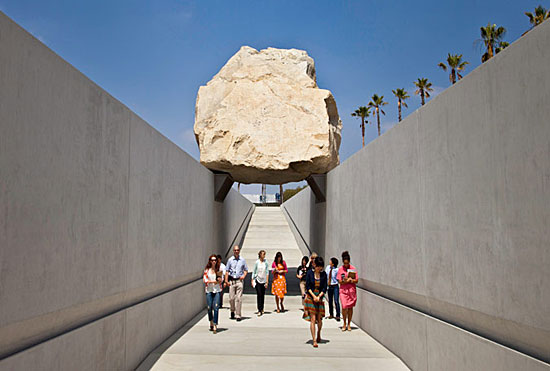
Have you seen The Rock yet? LACMA's half price this weekend if you get there via alternate transportation.
Posted 9/27/12
Bike to the future for Carmageddon II
September 13, 2012
At the end of Back to the Future, Doc coolly tells Marty “where we’re going, we don’t need roads,” before donning shades and peeling out to the sequel in a flying DeLorean.
We’re not there yet. But Los Angeles’s real-life sequel, Carmageddon II, gives L.A. a chance to prove that where we’re going, we don’t need a major freeway—at least for one weekend.
With a large segment of the 405 set to close completely during the last weekend of September, local cycling advocates are seizing the opportunity to promote their favorite driving alternative. With support from Metro, they’re organizing two “Bike Carmageddon” group rides, one on the Westside and one in the San Fernando Valley—the areas most affected by the closure.
Jim Shanman, founder of Walk ‘n Rollers and a member of the Los Angeles County Bicycle Coalition, is the main organizer of the Westside Ride.
“We want to get to people that wouldn’t otherwise be riding,” said Shanman. “This is a great way for families to get out safely with a group—there are certified trainers and no one will be left behind.”
Local officials announced the rides on Tuesday, while promoting the upcoming closure as an opportunity for people to engage with their local communities. The bike rides are just part of what’s on tap. Many businesses are offering special discounts and the art community is preparing “Artmageddon,” a region-wide art celebration that’s accessible by foot, bike and rail. The Los Angeles County Museum of Art, the Natural History Museum and the Page Museum at the La Brea Tar Pits will offer half-price admission for those who use alternative transportation to get there.
“Stay out of the car completely if you can avoid it,” said Supervisor Zev Yaroslavsky, who represents most of the affected region. “Stay local, play local, eat local, use the bike, and you’ll have a much better weekend.”
Dan Dabek, organizer of the San Fernando Valley bike ride and director of Cyclists Initiating Change through Live Exchange, or C.I.C.L.E., said bicycles and organized rides help people get a new perspective on where they live.
“The point is to show people that they can still get around their cities without getting in their cars,” said Dabek. “You connect with your city more, you can see what events are going on, visit new places and meet new people.”
The Westside Ride begins Saturday, September 29, with a kick-off party at 8:30 a.m. The 22-mile main ride will embark from Culver City Expo Station at 9 a.m. Along the path of the main ride, shorter rides will be held in Culver City, Venice, Santa Monica, and between Westwood and Santa Monica and Westwood and Culver City.
The 8-mile Metro Orange Line Valley Ride takes place Sunday, September 30 from 10 a.m. to 1 p.m. Riders will meet in the park-and-ride lot of the Balboa Orange Line Station, at 6338 Balboa Boulevard in Encino. The family-friendly, leisurely ride will traverse part of the Orange Line bike path, making stops at the Sepulveda Basin Recreation Center and the Japanese Garden before circling back to the Encino Farmers’ Market.
Both rides are free. Minors are required to wear a helmet and be accompanied by a parent or guardian and kids under 8 should use a tag-a-long, bike trailer, tandem or other safe device.
For bike activists, the underlying goal of these events is to alter daily transportation habits in the long term, even if the changes are incremental.
“They don’t have to jump in all at once,” Dabek said of new cyclists. “We are showing people how to go to the coffee shop, go to the grocery store or even bicycle to work once a week.”
With the busiest freeway in the country out of commission, Carmageddon II might be the right time to start. Shanman, of the Walk ‘n Rollers, said brand new bike infrastructure is popping up “seemingly every week,” but sometimes people need a little push to start using it.
“L.A.is such a car-centric city,” said Shanman. “We are finding that there are a lot of people that want to try out that infrastructure, but aren’t sure how to do it. This is an opportunity to get over that hump.”
Posted 9/13/12
Talking truth and power behind bars
August 22, 2012
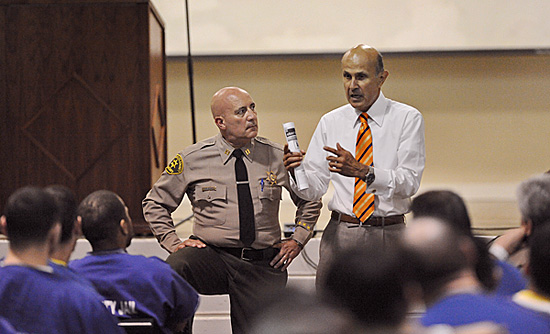
Sheriff Lee Baca, right, and Central Jail Captain Ralph Ornelas hold a "town hall meeting" with inmates.
Lee Baca is standing before a captive audience, sounding more like a preacher than the leader of the nation’s largest sheriff’s department.
“Start decorating your minds like you would a palace,” Baca implores a group of 90 inmates inside the archaic Men’s Central Jail. “Put positive things in there that will make you happy…I happen to believe you’re worth something.”
The men, seated shoulder-to-shoulder on metal pews in a jailhouse chapel, nod in agreement, giving the sheriff an appreciative hand to go along with their list of grievances. Earlier in the session, they’d complained to the boss about broken shower heads, uncomfortably cold air, inadequate “roof-time” recreation and deputies who, for seemingly no good reason, threaten to yank them out of the sheriff’s pet educational program.
Although the incarcerated men expressed gratitude for Baca’s appearance and assurances, the reaction to this “inmate town hall”—and the 173 others that have been convened during the past year—has been far less friendly among the sheriff’s other jail constituency: the deputies who work there.
Their union contends that the town halls have undermined the authority of deputies because inmates are being encouraged to, among other things, sidestep the chain of command, taking their complaints straight to higher-ups. The impact, according to union leaders: a potentially more dangerous workplace as frontline deputies lose the upper hand.
“They’ve never had the sheriff come in and say you can go talk to the captain,” Mark Divis, vice president of the Association of Los Angeles Deputy Sheriffs, says of the inmates. “The word from the top is that you can go right past those guys [the deputies] and we’ll come running…At what level do you realize that you’re not dealing with a large number of rational individuals? If you’re in a church, it’s a bad place to talk about Satan worship.”
According to a union survey presented to the Citizens’ Commission on Jail Violence, 71% of 447 responding deputies said Baca’s town halls had made inmates feel more “empowered” and less respectful. Forty-nine percent said inmates actually had become more hostile toward their jailers.
Baca has dismissed the survey as not fully representative of the roughly 2,000 deputies who serve inside the county’s jails. Still, the findings do suggest a cultural divide that poses a significant challenge for the sheriff as he tries to fix a jail system rocked by allegations of deputy brutality and mismanagement. Among the rank-and-file, Baca’s self-described humanist views are not always embraced.
In police circles nationwide, Baca is known as a fervent reformer who believes in the power of innovative educational programs to transform the lives of inmates and end their cycle of recidivism. He has a doctorate from USC in public administration and says his “second love” is teaching, which he’s done at various levels for more than 30 years.
The inmates he visited last week were part of an educational program that focuses on positive decision-making and self-esteem development. The participants live together in a dorm, not in the packed, dank cells that have drawn most of the scrutiny over deputy conduct.
For that reason, their town hall meeting had a more upbeat tone than most, with some inmates thanking Baca for the opportunity to learn an assortment of life skills for the first time, from job training to anger management. As one told the sheriff: “I’m the kind of guy who ends up in Vegas with three hookers and married to one.”
Baca began the town hall meetings last October as the furor over alleged deputy brutality escalated. Saying his subordinates had failed to inform him of the problems, Baca ordered a series of management and policy changes that have helped reduce incidents of significant force. Baca also backed the creation of the blue-ribbon jail commission by the Board of Supervisors, encouraging current and former members of the department to come forward with testimony critical of top supervisors.
As of late last week, according to Men’s Central Jail Captain Ralph Ornelas, 6,870 inmates had voluntarily attended the town hall meetings, which run about 30 minutes and are led by captains. Baca himself has presided over only a few.
“I’ve learned to listen to what they say,” Ornelas says of the inmate meetings. “Sometimes it has validity. Sometimes they have a certain agenda against a particular deputy.” Whatever the case, Ornelas says, he believes the meetings are valuable because if inmates “see you as a person, then they’re less apt do to do something to you.”
The captain has statistics on his side. The numbers show that not only have use of force incidents declined, so too have inmate assaults on deputies.
The jail commission’s general counsel, Richard Drooyan, says he sees the union’s resistance to the meetings as “a serious issue,” revealing the philosophical and managerial hurdles ahead for Baca.
“My view is that these meetings represent a positive development. They reduce tensions and that reduces violence,” Drooyan says, adding: “You change the culture by making sure supervisors are on board with your vision and that they tell their charges, ‘This is the way it’s going to be and if you don’t do it, you’ll be held accountable.”
Union leaders argue, however, that such views are better suited to the ivory tower than the central jail. The union’s executive director, Steve Remige, says many inmates simply won’t change their stripes no matter how much “the sheriff wants to teach them peace, love and freedom.”
Take, for example, the two inmates he says participated in Baca’s prized educational program, called MERIT—Maximizing Education Reaching Individual Transformation. “Just hours after graduating from MERIT,” Remige says, “they were caught trying to get some exposed metal under some ceiling tiles.” Remige says he assumes they were looking for materials to make jailhouse weapons.
Nonetheless, the problems in the jail have handed Baca a high-profile opportunity to showcase his reformer’s approach to incarceration. To that end, he invited Los Angeles County Supervisor Zev Yaroslavsky to observe last week’s town hall—and to say a few words at the end to the men participating in Baca’s educational program.
“The sheriff is trying to do something that is not conventional. On your shoulders rests the sustainability of this program,” the supervisor said. “He’s stuck his political reputation on the line by treating you like human beings…Don’t screw it up.”
Posted 8/16/12
Expo, Orange Line ridership on a roll
August 16, 2012
Metro’s new transit lines are taking Los Angeles for a ride—in a big way.
The Expo Line, which opened April 28, has seen its ridership rise dramatically over the course of the past three months. The light rail line, which had 320,627 boardings in May, gave passengers 497,449 rides in July—an increase of 55%. Ridership on the line rose across the board—on Saturdays, Sundays and weekdays. Weekday ridership was up more than 60%, with 18,181 boardings last month, compared to 11,347 in May.
The surge is welcome news for the Expo Construction Authority, which built phase one of the project and is now at work on the line’s second and final leg to Santa Monica.
“We fully anticipate that ridership will continue to increase in the fall when school starts again and people realize there is a viable alternative to the congested I-10 freeway,” said Samantha Bricker, Expo’s chief operating officer.
It’s typical for new transit lines to get off to a slow start—but not this time.
“It’s very surprising,” said Metro’s chief operations officer, Frank Alejandro. “The Blue Line [ridership] jumped pretty quickly, but not as quickly as this.”
Part of the increase was spurred by the opening of two new stations—Farmdale and Culver City—in June, after the initial part of the line was already operating. In addition, some bus routes also were reconfigured to make it easier for commuters to transfer to the new line. And, in an unexpected but welcome development, the Daily News reported last month that many San Fernando Valley residents are taking the Red Line to downtown Los Angeles in order to pick up the Expo Line and travel to points west.
One of the newest riders is Hannah Burnham, who was starting a new job at USC as props master for its theater department Thursday and was taking her first ride on Expo to get to work. She had driven from Burbank to North Hollywood, where she picked up the Red Line to the 7th/Metro station and hopped aboard the Expo Line.
“I think it’s going to be great because I do not want to drive from Burbank to down here,” Burnham said. “Plus the pass is less than a parking permit at USC, plus USC will pay almost 40% of your Metro pass per month.”
In the San Fernando Valley, meanwhile, Orange Line ridership also reached new highs. The rapid transit busway, which on June 30 opened a new four-mile northward extension from Warner Center to Chatsworth, posted its best-ever Saturday ridership in July. The total of 16,999 Saturday boardings beats the previous record of 15,629 set in June, 2008.
Metro officials said 12% of the increase was directly attributable to the new extension. The ridership figures include only paid boardings. Thousands more rode for free on the line’s gala opening.
Even before the extension opened, the Orange Line’s ridership was surging. Boardings for the year ending June 30 were the highest ever on the nearly 7-year-old busway. More than 7.8 million trips were taken on the Orange Line; the previous annual record was 7.45 million boardings in 2008.
Of course, the Orange Line has been an overachiever since Day One, beating ridership projections its first month out, in November, 2005.
“Ridership out here in the Valley is tremendous,” said Karla Aleman, assistant transportation operations manager for Metro in the West Valley. “It’s amazing. A lot of people here depend on public transportation.”
Posted 8/16/12




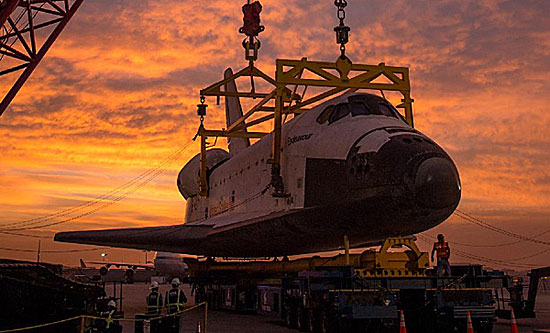
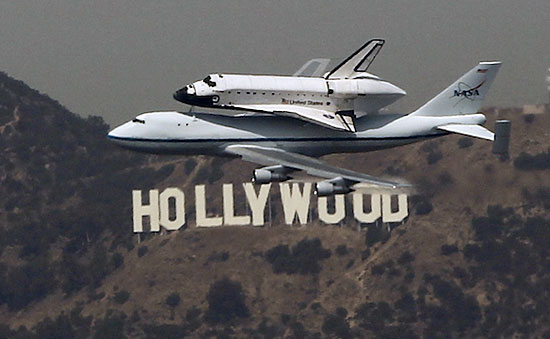
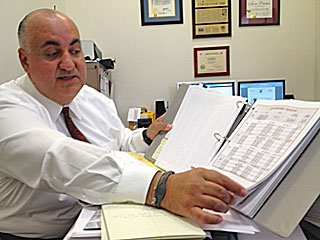
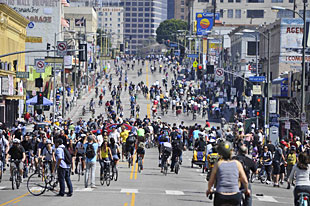
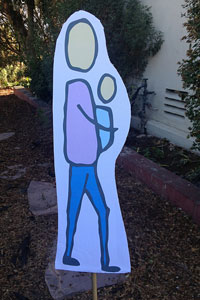
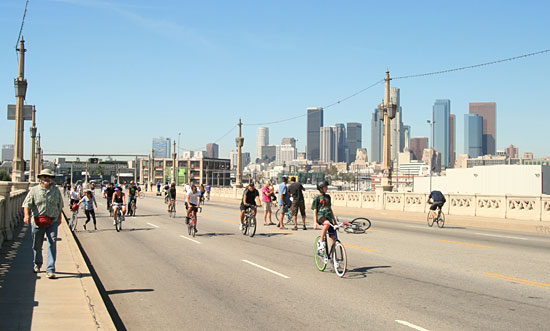
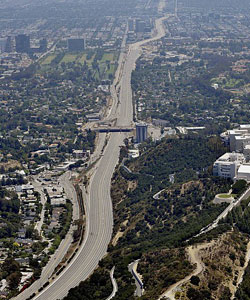
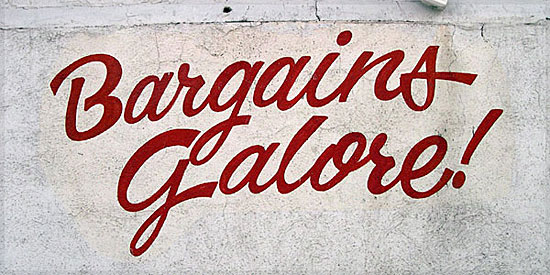
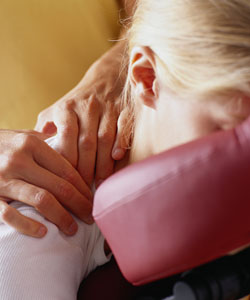
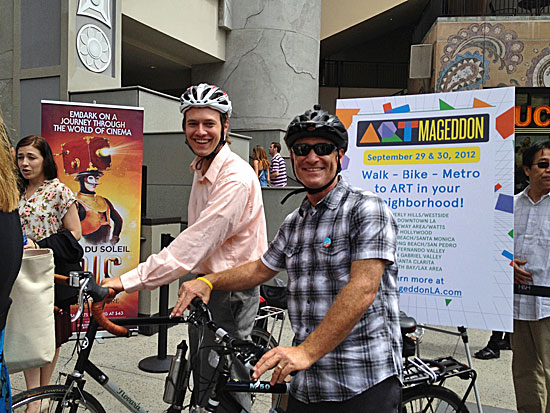
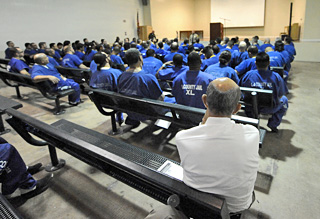
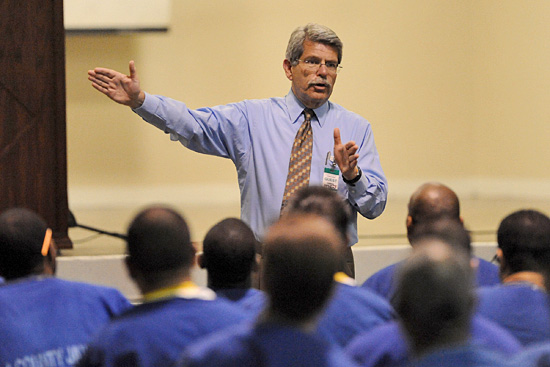
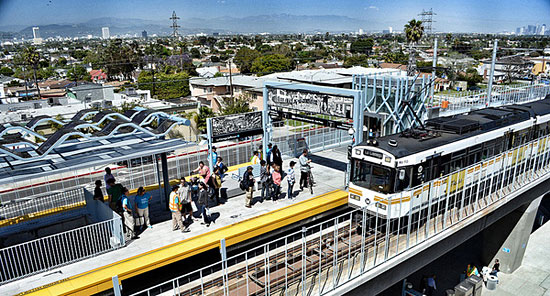
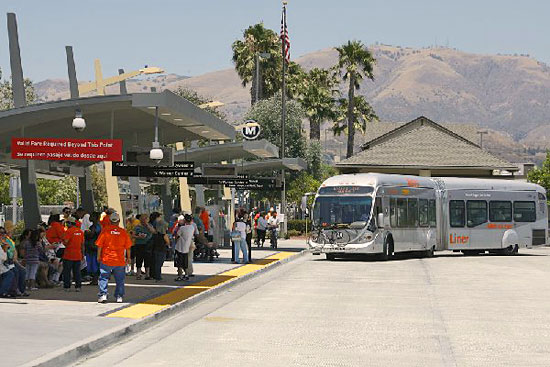







 405 bridge work causes a stink
405 bridge work causes a stink

